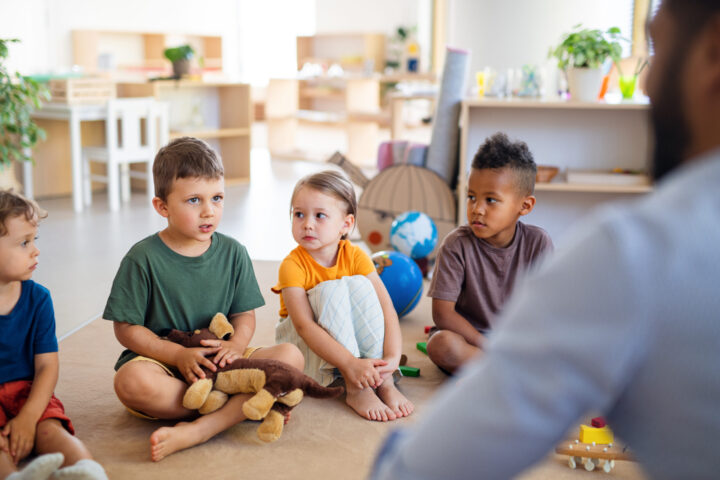Class discussions can teach children respect for others, communication skills, how to interact with peers and adults, and how to vote.
What is a class discussion?
A class discussion is different from the usual circle time. It is a meeting that brings children together to discuss ideas, solve problems, organize the day, plan activities, or celebrate what goes well.
What do children gain from class discussions?
They learn to
- listen and respond to others. “Dan agrees with Tia’s idea. Who has anything to add?” “Lilly suggested serving cupcakes at the party, but Sophia recommends cookies. How should we decide?”
- ask questions and share information. “Jamal wants to report what he learned about snow. Then you can ask him about it.”
- set expectations together. “All of you voted to make ‘Hands to yourself!’ a class rule.” “We all agreed that since our new tablets are so popular, turns will be limited to 15 minutes so everyone gets a chance to use one this week.”
- think about time. “After the meeting, we usually go outside.”
- solve problems and make decisions together. “Jada, you wanted snack time to be earlier.” Jada might then reply, “Yes, I want us to vote.”
- plan what to study and how to share knowledge. “What are some ways you could show what you learned about eggs?”
- build relationships and gain a sense of community. “You had a very long talk, and you made a plan that works!”
What is the adult’s role?
The adult facilitates class discussions by
- including them in the daily schedule. Even on a busy day, try to fit in a shorter class discussion.
- stating the purpose of class discussions. “It’s time to choose songs for our Open House.” (Note: If you have meetings only to handle problems, children may start to dislike them.)
- helping children remember to “speak up,” take turns, stay on topic, and listen to others.
- encouraging children to give each other suggestions.
- keeping track of children’s ideas or questions on an easel or whiteboard.
What’s a good schedule for class discussions?
- You can start the first day the children are together. You might have one to start the day and one to “wrap it up.”
- Early in the year, a five-minute class discussion may be long enough. Several short ones may be better than a long one that makes children restless. As children get used to them and see their benefits, these discussions may last 15 minutes or more.
IEL Resource
- Resource List: Class Discussions


 PDF
PDF